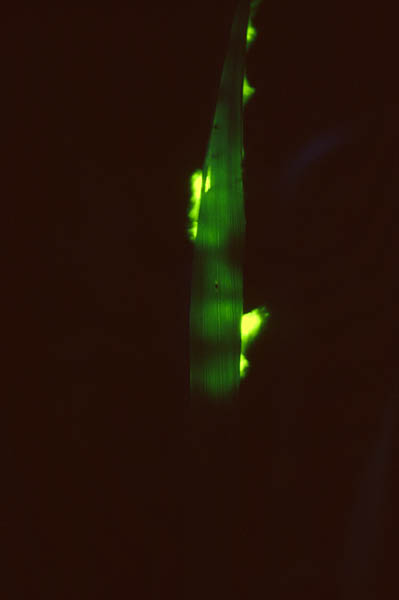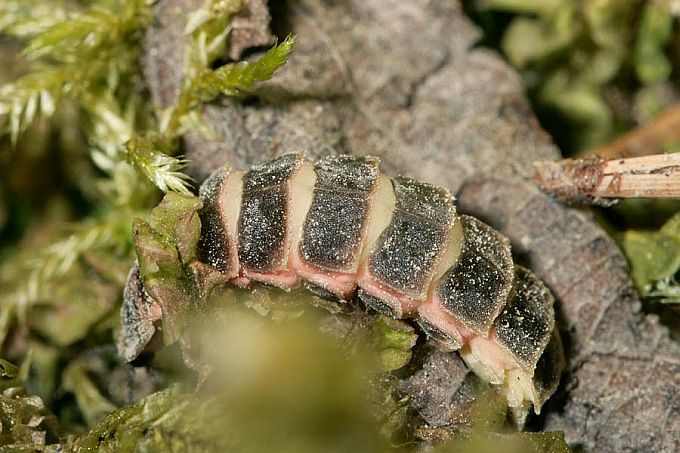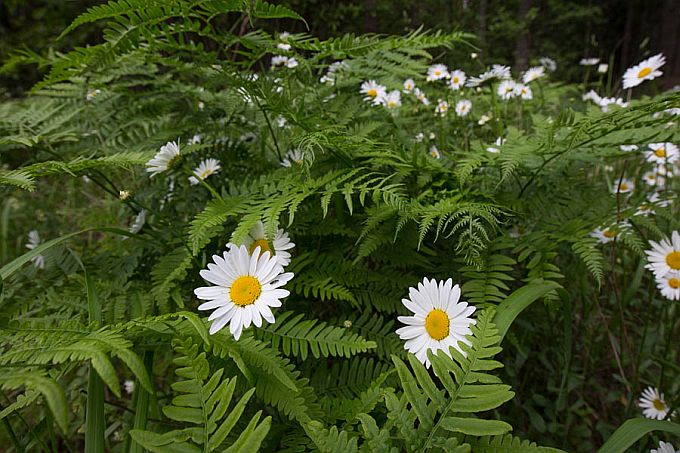On this somewhat magical night we have deliberately searched for ”glowworms”, some of us surely also for the ”fern flower”. The one in a group who first finds a glowing glowworm will enjoy good luck this year.
Only the female glowworm glows – she has not been given the power of flight. The male glowworm, her suitor, is capable of flying and has to be tempted to approach by the glow
Glowworm Jaanimardikas Lampyris noctiluca
Glowworm light
The length of the female glowworm is about a couple of centimetres. With her flat body and large eyes she is more similar to an insect larva.
At about Midsummer we can meet them glowing at night, at forest verges or in sparse forests. The greenish light is created at the tip of the female’s abdomen beneath the cuticula.
From what is the light created? By the decomposition of a protein called luciferin in the photocytes of cells. For the glow oxygen from the air is necessary; for this the female beetle must climb up on grass straws or leaves of plants..
The female beetles can govern the intensity and power of the glow. How is this possible? For this only hypotheses are available at present.
The light coming from the glowworm on decomposition of the luciferin is ”cold”, that is, it lacks the infrared spectrum part, likewise the ultraviolet part. The efficiency of such light is exceptionally great: 98% is used for light and only 2% for heat. There is food for thought for developers of sustainable technologies.
Glowworn
A glowworm that has mated no longer lights her ”lantern” .
The larva from the eggs winter in the forest mould; their larva stage may last several years.
A half-hour journey of a glowworm on a straw of grass
The story of the „fern flowers“ seems even more complicated.
The blossoming time of fern flowers is said to start at midnight on the night before Midsummer day; the whole flowering only lasts an hour. The flowers open with a great sparkle of fire. ” Who finds a fern blossom and keeps it in his soul will get the power to know the things of the world” – so people of old believed.
Ferns in flowers






